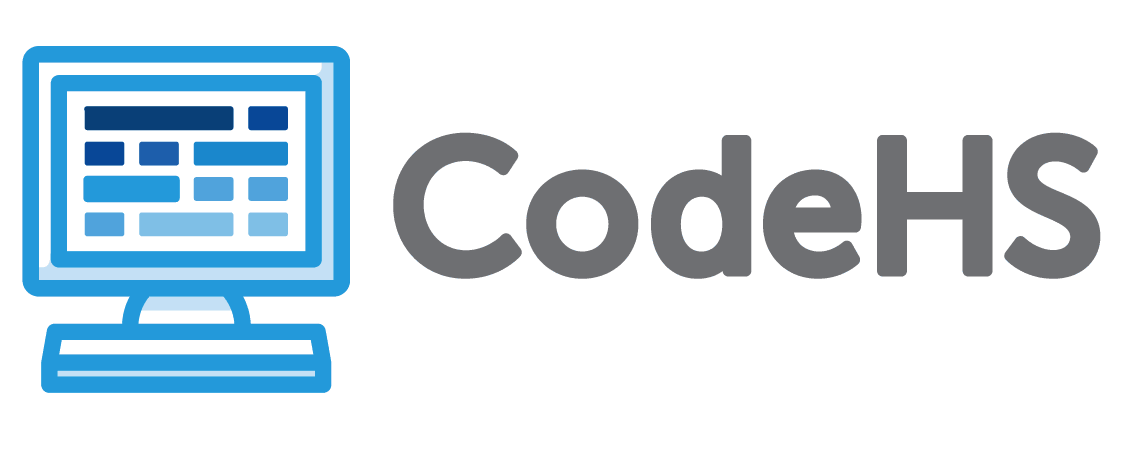| L1.CS.D.01 |
Explain how abstractions hide the underlying implementation details of computing systems embedded in everyday objects. |
Lessons
|
| L1.AP.PD.05 |
Document design decisions using text, graphics, presentations, and/or demonstrations in the development of complex programs. |
Lessons
|
| L1.IC.SI.01 |
Use tools and methods for collaboration. |
Lessons
|
| L1.AP.PD.01 |
Plan and develop programs by analyzing a problem and/or process, developing and documenting a solution, testing outcomes, and adapting the program for a variety of users. |
Lessons
|
| L1.AP.C.03 |
Design and iteratively develop computational artifacts for practical intent, personal expression, or to address a societal issue by using events to initiate instructions. |
Lessons
|
| L1.AP.PD.04 |
Design and develop computational artifacts, working in team roles, using collaborative tools. |
Lessons
|
| L1.DA.S.01 |
Translate between different bit representations of real-world phenomena, such as characters, numbers, and images. |
Lessons
|
| L1.AP.A.02 |
Describe how artificial intelligence algorithms drive many software and physical systems. |
Lessons
|
| L2.AP.A.02 |
Develop an artificial intelligence algorithm to play a game against a human opponent or solve a real-world problem. |
Lessons
|
| L2.AP.PD.05 |
Develop and use a series of test cases to verify that a program performs according to its design specifications. |
Lessons
|
| L1.AP.PD.03 |
Use debugging tools to identify and fix errors in a program. |
Lessons
|
| L1.AP.C.02 |
Trace the execution of loops and conditional statements, illustrating output and changes in values of named variables. |
Lessons
|
| L1.AP.M.01 |
Decompose problems into smaller components through systematic analysis, using constructs such as procedures, modules, and/or objects. |
Lessons
|
| L1.AP.V.01 |
Use lists to simplify solutions, generalizing computational problems instead of repeatedly using simple variables. |
Lessons
|
| L1.CS.HS.01 |
Explain the interactions between application software, system software, and hardware layers. |
Lessons
|
| L2.CS.HS.01 |
Categorize the roles of operating system software. |
Lessons
|
| L1.CS.T.01 |
Develop guidelines that convey systematic troubleshooting strategies that others can use to identify and resolve errors. |
Lessons
|
| L2.CS.T.01 |
Identify how hardware components facilitate logic, input, output, and storage in computing systems, and their common malfunctions. |
Lessons
|
| L1.NI.NCO.01 |
Evaluate the scalability and reliability of networks, by describing the relationship between routers, switches, servers, topology, and addressing. |
Lessons
|
| L2.NI.NCO.01 |
Describe the issues that impact network functionality (e.g., bandwidth, load, latency, topology). |
Lessons
|
| L1.NI.C.01 |
Give examples to illustrate how sensitive data can be affected by malware and other attacks. |
Lessons
|
| L2.NI.C.01 |
Compare ways software developers protect devices and information from unauthorized access. |
Lessons
|
| L1.NI.C.02 |
Recommend cybersecurity measures to address various scenarios based on factors such as efficiency, feasibility, and ethical impacts. |
Lessons
|
| L1.NI.C.03 |
Compare various security measures, considering trade-offs between the usability and security of a computing system. |
Lessons
|
| L1.NI.C.04 |
Explain trade-offs when selecting and implementing cybersecurity recommendations. |
Lessons
|
| L2.AP.M.02 |
Analyze a large-scale computational problem and identify generalizable patterns that can be applied to a solution. |
Lessons
|
| L2.AP.PD.08 |
Compare multiple programming languages and discuss how their features make them suitable for solving different types of problems. |
Lessons
|
| L1.IC.C.01 |
Evaluate the ways computing impacts personal, ethical, social, economic, and cultural practices. |
Lessons
|
| L2.IC.C.01 |
Evaluate the beneficial and harmful effects that computational artifacts and innovations have on society. |
Lessons
|
| L1.IC.C.02 |
Test and refine computational artifacts to reduce bias and equity deficits. |
Lessons
|
| L1.AP.PD.02 |
Evaluate licenses that limit or restrict use of computational artifacts when using resources such as libraries. |
Lessons
|
| L2.IC.C.02 |
Evaluate the impact of equity, access, and influence on the distribution of computing resources in a global society. |
Lessons
|
| L1.IC.C.03 |
Demonstrate how a given algorithm applies to problems across disciplines. (e.g. iterating through a list to find the maximum value for a given data set) |
Lessons
|
| L2.IC.C.03 |
Predict how computational innovations that have revolutionized aspects of our culture might evolve. |
Lessons
|
| L1.IC.SI.02 |
Practice grade-level appropriate behavior and responsibilities while participating in an online community. Identify and report inappropriate behavior. |
Lessons
|
| L1.IC.SLE.01 |
Explain the beneficial and harmful effects that intellectual property laws can have on innovation. |
Lessons
|
| L2.IC.SLE.01 |
Debate laws and regulations that impact the development and use of software and technology. |
Lessons
|
| L1.IC.SLE.02 |
Explain the privacy concerns related to the collection and generation of data through automated processes that may not be evident to users. |
Lessons
|
| L1.IC.SLE.03 |
Evaluate the social and economic implications of privacy in the context of safety, law, or ethics. |
Lessons
|
| L1.IC.SLE.04 |
Using grade level appropriate content and complexity, discuss the legal, social, and ethical impacts associated with software development and use, including both positive and malicious intent. |
Lessons
|
| L2.IC.SLE.02 |
Using grade level appropriate content and complexity, discuss the legal, social, and ethical impacts associated with software development and use, including both positive and malicious intent. |
Lessons
|

